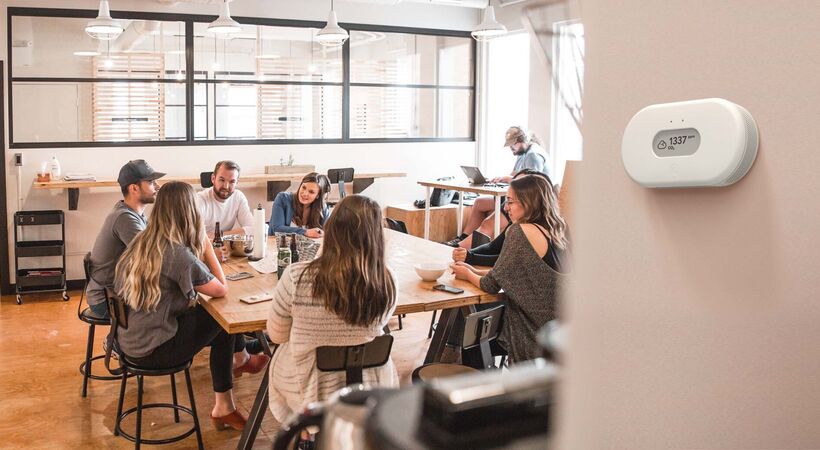Airthings has launched View CO₂ for Business. The new battery-operated, wireless sensor will empower schools and offices everywhere to take charge of their air quality by warning them when carbon dioxide (CO₂) exceeds recommended levels and indoor air quality deteriorates. View CO₂ for Business combines easily with the rest of the products in the Airthings for Business solution, which lets you monitor, visualize, and control your indoor air quality remotely to ensure a safe and healthy environment.
High CO₂ levels can increase the risk of airborne virus transmission and cause lower productivity, drowsiness, headaches, and loss of concentration. Since our bodies expel CO₂ when we breathe out, the levels can rise quickly in enclosed spaces with poor ventilation. For that reason, measuring CO₂ levels serves as a good indicator of indoor air quality and how well a ventilation system is working. Monitoring humidity and temperature indoors is also important as both conditions correlate with virus transmission.
In addition to carbon dioxide, the new View CO₂ for Business also measures temperature, humidity, virus risk, noise, and light. The Virus Risk Indicator fuses data from Airthings core sensors into an algorithm to calculate the risk of airborne virus spread in an indoor space. The capability helps schools and offices understand their indoor air quality and how it contributes to spreading airborne viruses, providing personalized insights to minimize the risk. The optional CO2 Alert feature lets anyone know when a room needs a breather by visually alerting them through a red LED light on the product when CO2 levels get too high.
View CO₂ for Business includes a customizable, ultra-low power display to maximize battery life up to ten years. Users can choose to show the live sensor data that matters most to them or a QR code so that anyone in the room can check the air quality in that space in real-time. The live sensor data will enable students, educators, and office workers to take immediate actions to improve the air quality, while facility managers and building owners can remotely monitor and leverage advanced analytics to optimize air quality and energy usage–saving both time and costs.








